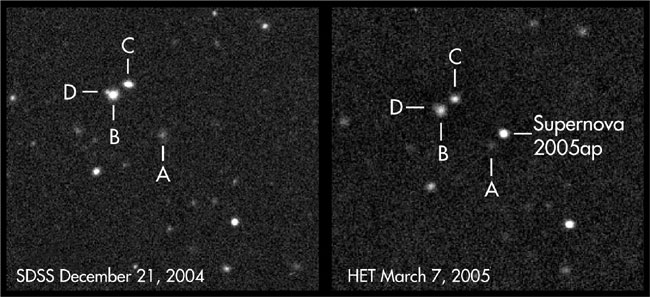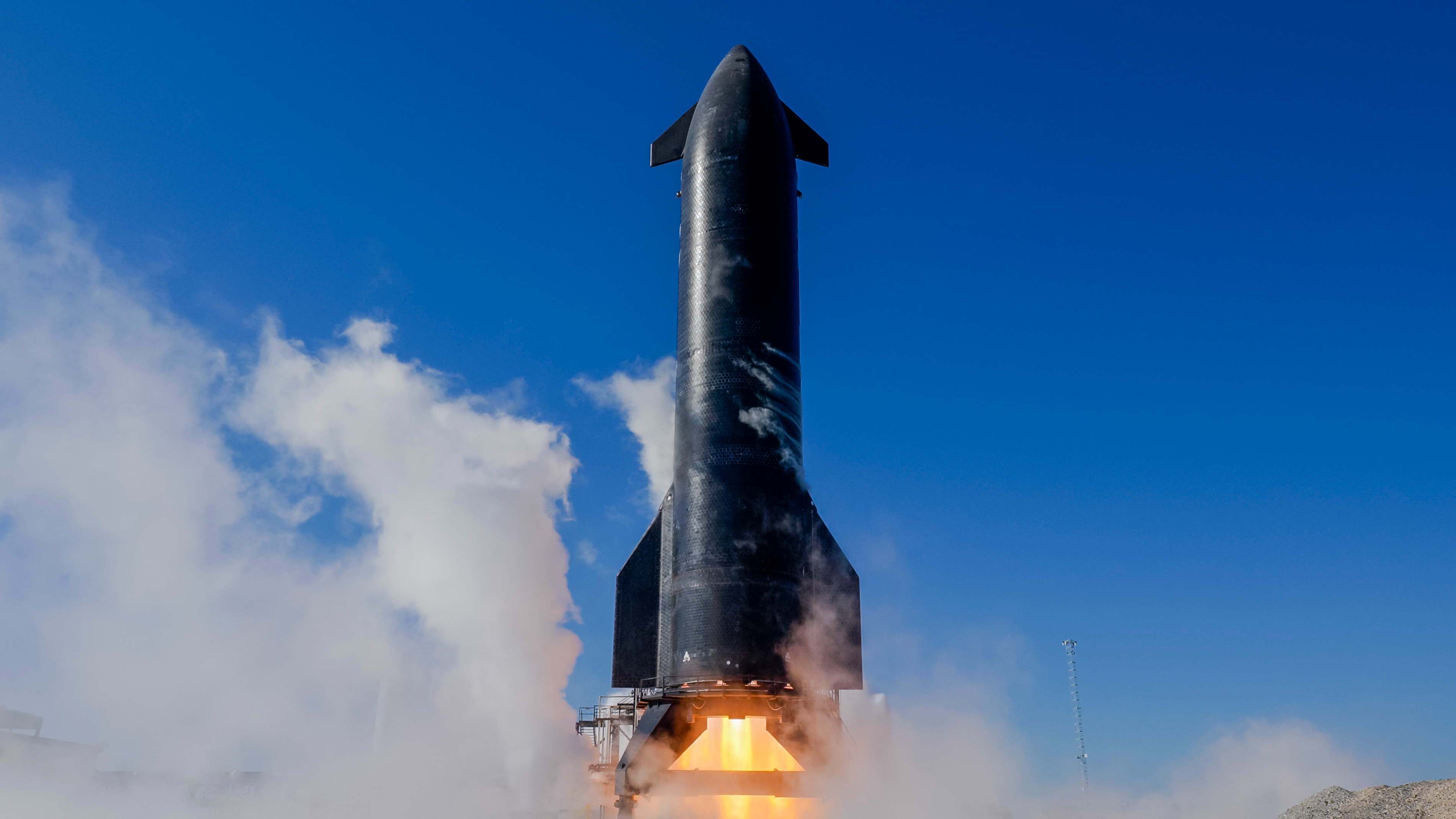
Robert Quimby has an unusual distinction among astronomers. The Caltech postdoctoral researcher has discovered the two brightest star explosions ever witnessed within months of each other.
Quimby's latest find is supernova 2005ap, which at its peak blazed 100 billion times brighter than the sun and was twice as luminous as the previous record holder, a supernova called 2006gy, which he also discovered.
Quimby actually discovered supernova 2005ap first, but confirmation of the blast's luminosity required follow-up observations that were only recently completed.
"There I was, finding my first supernova. I was just happy to get anything," said Quimby, who was previously at the University of Texas in Austin. "It turned out to be the most luminous supernova ever found."
The 2005ap supernova finding will be detailed in the Oct. 20 issue of The Astrophysical Journal Letters.
Like birds, not elephants
2005ap is a so-called Type II supernova, which scientists think typically occurs when the core of a massive star collapses under its own weight, triggering an explosion. However, 2005ap was 300 times brighter than average Type II explosions.
Breaking space news, the latest updates on rocket launches, skywatching events and more!
Quimby's other discovery, supernova 2006gy, emitted more than 50 billion suns' worth of light and took several weeks to dim. It was speculated the parent star of that supernova was a stellar behemoth with about 150 times the mass of the sun, and that the explosion represented a new mechanism involving an exotic antimatter engine that had been theorized but never observed.
Scientists think supernova 2005ap was more like typical supernovas because, like other Type II's, it brightened and dimmed over a matter of days.
"That means the physics [of 2005ap] has to be different somehow, but we haven't totally puzzled out the reason why," said J. Craig Wheeler, a member of the discovery team and Quimby's advisor at the University of Texas in Austin.
The team is not sure the exact size of 2005ap's parent star, but they estimate it must have been around 10 solar masses.
"We don’t have a good number on [the mass]," Wheeler told SPACE.com. "But it wasn't a hundred solar masses like the other one or it would have behaved more sedately."
He added, "Elephants just move more sedately than birds."
Quimby discovered 2005ap by using telescopes at McDonald Observatory at the University of Texas in Austin and then followed up with observations with the Keck Telescope in Hawaii that were made by Greg Aldering of Lawrence Berkeley National Lab.
The combined observations were enough to determine that 2005ap was located 4.7 billion light-years away. The distance was crucial to determining the supernova's luminosity and establishing it as the brightest ever recorded.
Not luck
Quimby said it was hard work and not luck that enabled him to discover two bright supernovas in a row. "I'm searching a huge volume of space, comparable to all previous nearby supernova surveys combined," he said.
Quimby also looked for exploding stars in places other astronomers avoided, such as dwarf galaxies and galaxies with active black holes at their centers.
The new findings could force other supernova seekers to change their searching techniques. "There's no question that [Quimby's results] have gotten everybody's attention," Wheeler said.
The University of Michigan's Robotic Transient Search Experiment (ROTSE) project team is planning to shift gears and begin looking for supernovas in addition to its main target of gamma ray bursts, Wheeler said, and the Sloan Digital Sky Survey Supernova Search is also reconsidering its search filters in response to the new discoveries.
- Top 10 Star Mysteries
- Vote Now: The Strangest Things in Space
- VIDEO: The King of Supernovas
Join our Space Forums to keep talking space on the latest missions, night sky and more! And if you have a news tip, correction or comment, let us know at: community@space.com.
Ker Than is a science writer and children's book author who joined Space.com as a Staff Writer from 2005 to 2007. Ker covered astronomy and human spaceflight while at Space.com, including space shuttle launches, and has authored three science books for kids about earthquakes, stars and black holes. Ker's work has also appeared in National Geographic, Nature News, New Scientist and Sky & Telescope, among others. He earned a bachelor's degree in biology from UC Irvine and a master's degree in science journalism from New York University. Ker is currently the Director of Science Communications at Stanford University.
